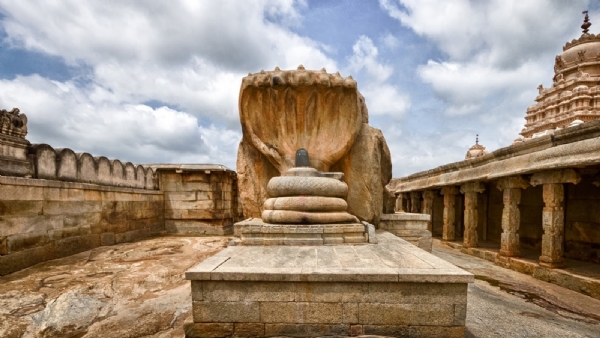Heritage sites from Konkan, Andhra and Meghalaya make it to the tentative UNESCO World Heritage Site list
07 Apr 2022 13:10:13
New Delhi, Apr 7: Cultural heritage sites from the states of Maharashtra, Andhra Pradesh and Meghalaya have made it to the tentative list of the UNESCO World Heritage Sites in 2022. This has made the total of Indian sites in the UNESCO tentative list to 49, with the three being added to the 46 sites that have made their way to the tentative list until now.

The Geoglyphs (Petroglyphs) of Konkan in Maharashtra, the Sri Veerabhadra Temple and Monolithic Nandi of Lepakshi in Andhra Pradesh and the Living Root Bridge, also known as Jingkieng jri, in Meghalaya are the three monuments that have made their way to the UNESCO World Heritage Sites' tentative list. The UNECO tentative list is an inventory of those properties which each State Party intends to consider for nomination as a protected world heritage site.
The Iconic Riverfront of the Historic City of Varanasi, temples of Kanchipuram, Megalithic Site of Hire Benkal in Karnataka, Bhedaghat-Lametaghat in Narmada Valley, the Satpura Tiger Reserve, and the Maratha Military Architecture consisting of 14 forts from Maharashtra were the six heritage sites that had made their way to UNESCO's tentative list in 2021.
Also read: Al Qaeda joins Hijab row in Karnataka; Al Zawahiri releases video supporting Hijab practice
The Geoglyphs of Konkan counted in list for the present year includes 9 sites, out of which 8 are in Maharashtra and another site Pansaymol in Goa. Kasheli, Rundhye Tali, Devache Gothane, Barsu, Devi Hasol, Jambharun, Kudopi and Ukshi are the geoglyph sites from Maharashtra. Geoglyphs are rock art produced on the surface earth either by positioning rocks, rock fragments or by carving out or removing part of a rock surface to form a design.
The Sri Veerabhadra temple, also known as Lepakshi Temple is a significant Shiva temple from Andhra Pradesh with its significance dating back to the Indian epic Ramayana. The temple continues to remain historically significant thereafter. Jingkieng Jri, is local term used to refer to the 'Living Root Bridges' that are often observed around the state of Meghalaya. A total of 72 sites of Jingkieng Jri have been identified and counted in the tentative list.